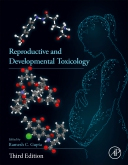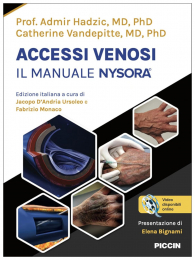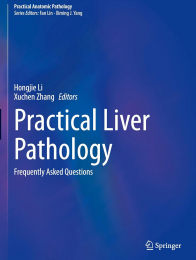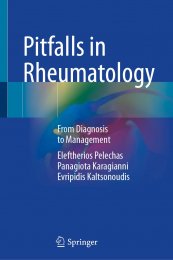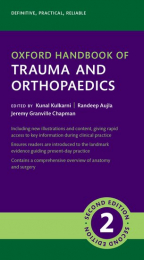Non ci sono recensioni
DA SCONTARE
| Features: |
|
Section I. General
1. Reproductive Anatomy and Physiology
2. Pharmacokinetics in Pregnancy
3. Physiologically Based Pharmacokinetic Models in Reproductive and Developmental Toxicology
4. Adverse Outcome Pathways in Reproductive and Developmental Toxicology
Section II. Toxicity Testing Models, Safety Evaluation, and Regulatory Aspect
5. Juvenile Toxicology Testing
6. Relevance of Animal Testing and Sensitivity of End Points in Reproductive and Developmental Toxicity
7. Alternative Methods to Animal Experimentation for Testing Dvelopmental Toxicity
8. Use of Computational Toxicology Tools to Predict In Vivo Endpoints
9. Guidelines for Reproductive and Developmental Toxicity Testing and Risk Assessment of Chemicals
10. Reproductive Toxicity: In Vivo Testing Guidelines from OECD
11. In Vitro Biomarkers of Developmental Neurotoxicity
12. Reproductive and Developmental Safety Evaluation of New Pharmaceutical Compounds
13. Using Zebrafish to Assess Developmental Neurotoxicity
14. Caenorhabditis elegans as a Model to Assess Reproductive and Developmental Toxicity
15. Postmarket Surveillance and Regulatory Considerations in Reproductive and Developmental Toxicology: A Food and Drug Administration Perspective
Section III. Nanoparticles and Radiation
16. Developmental Toxicity of Engineered Nanomaterials
17. Effects of Ionizing Radiation on Reproduction and Development
Section IV. Gases and Solvents
18. Reproductive and Developmental Toxicity of Solvents and Gases
Section V. Drugs of Abuse and Addiction, Smoking, and Alcohol
19. Developmental Neurotoxicity of Abused Drugs
20. Effects of Alcohol on Embryo/Fetal Development
21. Cigarette and E-cigarettes Smoking and Reproductive and Developmental Toxicity
Section VI. Pharmaceuticals, Nutraceuticals and Food Additives
22. Thalidomide
23. Retinoids
24. Safety of Cannabis- and Hemp-Derived Constituents in Reproduction and Development
25. Caffeine
26. Melamine and Cyanuric Acid
27. Ionophores
Section VII. Metals
28. Boron
29. Arsenic, Cadmium, and Lead
30. Mercury
31. Manganese
32. Selenium
Section VIII. Pesticides, Industrial, and Other Environmental Contaminants
33. Organophosphates and Carbamates
34. Chlorinated Hydrocarbons and Pyrethrins/Pyrethroids
35. Herbicides and Fungicides
36. Brominated Flame Retardants
37. Polychlorinated Biphenyls, Polybrominated Biphenyls, Polychlorinated Dibenzo-p-dioxins, and Polychlorinated Dibenzofurans
38. Reproductive Toxicity of Polycyclic Aromatic Hydrocarbons
39. Bisphenol A - Toxicity and Risk Assessment Update with Academic and Regulatory Perspectives and Physiologically Based Pharmacokinetic Modeling
40. Ethylene Glycol
41. Perfluorooctane Sulfonate and Perfluorooctanoic Acid
42. Traffic-related Air Pollution and the Developing Brain
43. Environmental Pollutants and Embryonic Implantation and Embryonic Development.
44. Personal Care Products and Cosmetics
45. UV Screening Chemicals
Section IX. Phytotoxicants and Mycotoxins
46. Toxic Plants
47. Fumonisins
48. Aflatoxins, Ochratoxins, and Citrinin
49. Trichothecenes and zearalenone
Section X. Special Topics
50. Drugs and Chemical Contaminants in Human Breast Milk
51. Stem Cells in Developmental Toxicity Testing
52. Embryonic and Fetal Toxic Lesions and Stem Cell Therapy
53. Epigenetics in Reproduction and Development
54. Mitochondrial Dysfunction in Reproductive and Developmental Toxicity
55. Cell Signaling Mechanisms in Developmental Neurotoxicity
56. Neuroinflammation and Oxidative Injury in Developmental Neurotoxicity
57. Effects of Stress on Reproductive Function and Fetal Development
Section XI. Endocrine Disruption
58. Endocrine Disruption
59. Role of Endocrine Disruptors in Male Infertility and Impact of COVID-19 on Male Reproduction
Section XII. Infertility and Teratogenicity
60. Toxicology of Reproduction Process and Problems of Male Infertility
61. Environmental Pollutants and Neural Tube Defects
62. Teratogenicity
63. Micro-CT and Volumetric Imaging in Developmental Toxicology
Section XIII. Toxicologic Pathology
64. Toxicologic Pathology of the Reproductive System
Section XIV. Placental Toxicity
65. The Placental Role in Developmental Programming
66. Strategies for Investigating Hemochorial Placentation
67. The Significance of ABC Transporters in Human Placenta for the Exposure of Fetus to Xenobiotics
68. Placental Toxicity
69. Placental Pathology
Section XV. Domestic and Wildlife Species
70. Endocrine Disruption in Wildlife Species
71. Teratogenesis in Livestock
72. Reproductive and Developmental Toxicity in Avian Species

